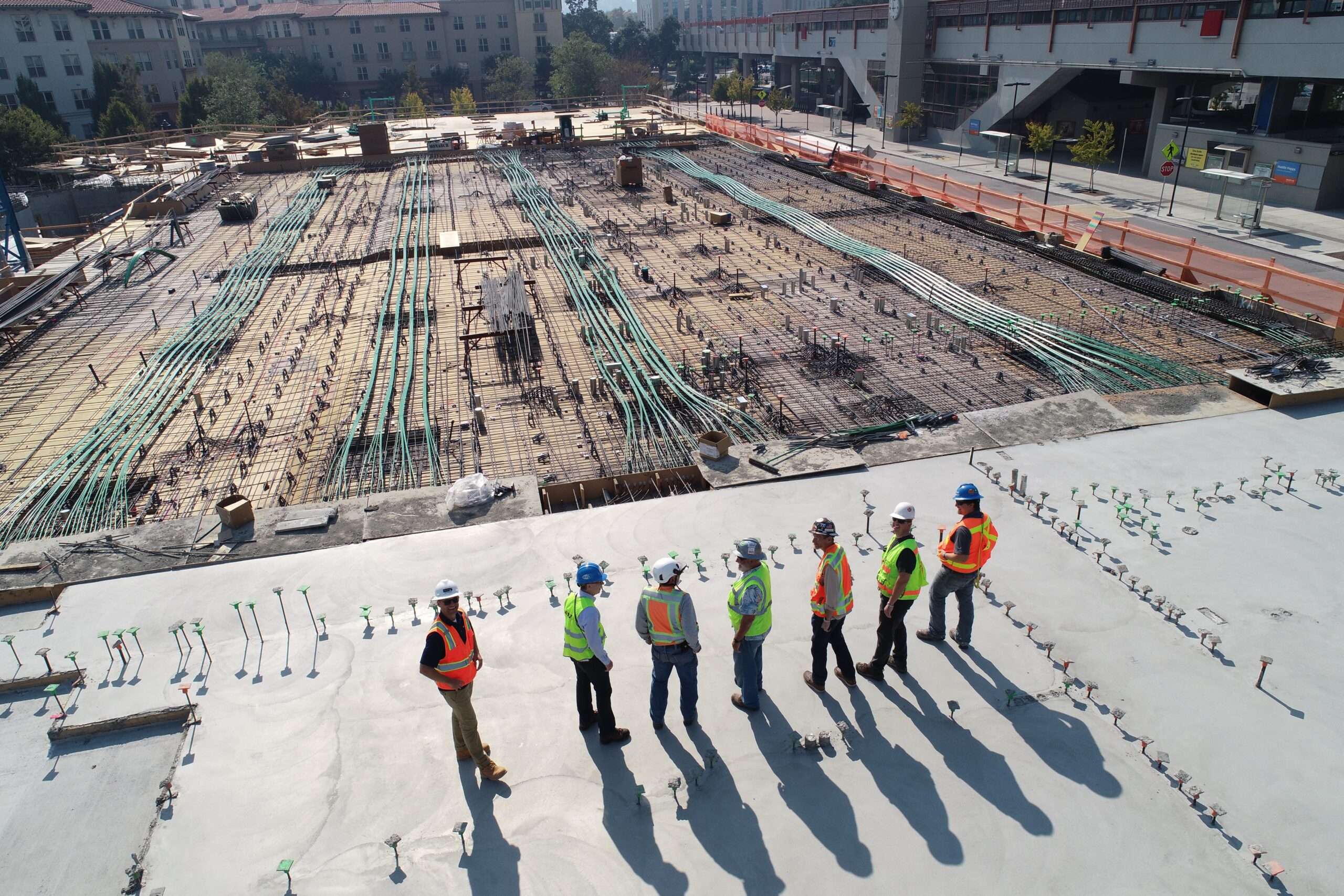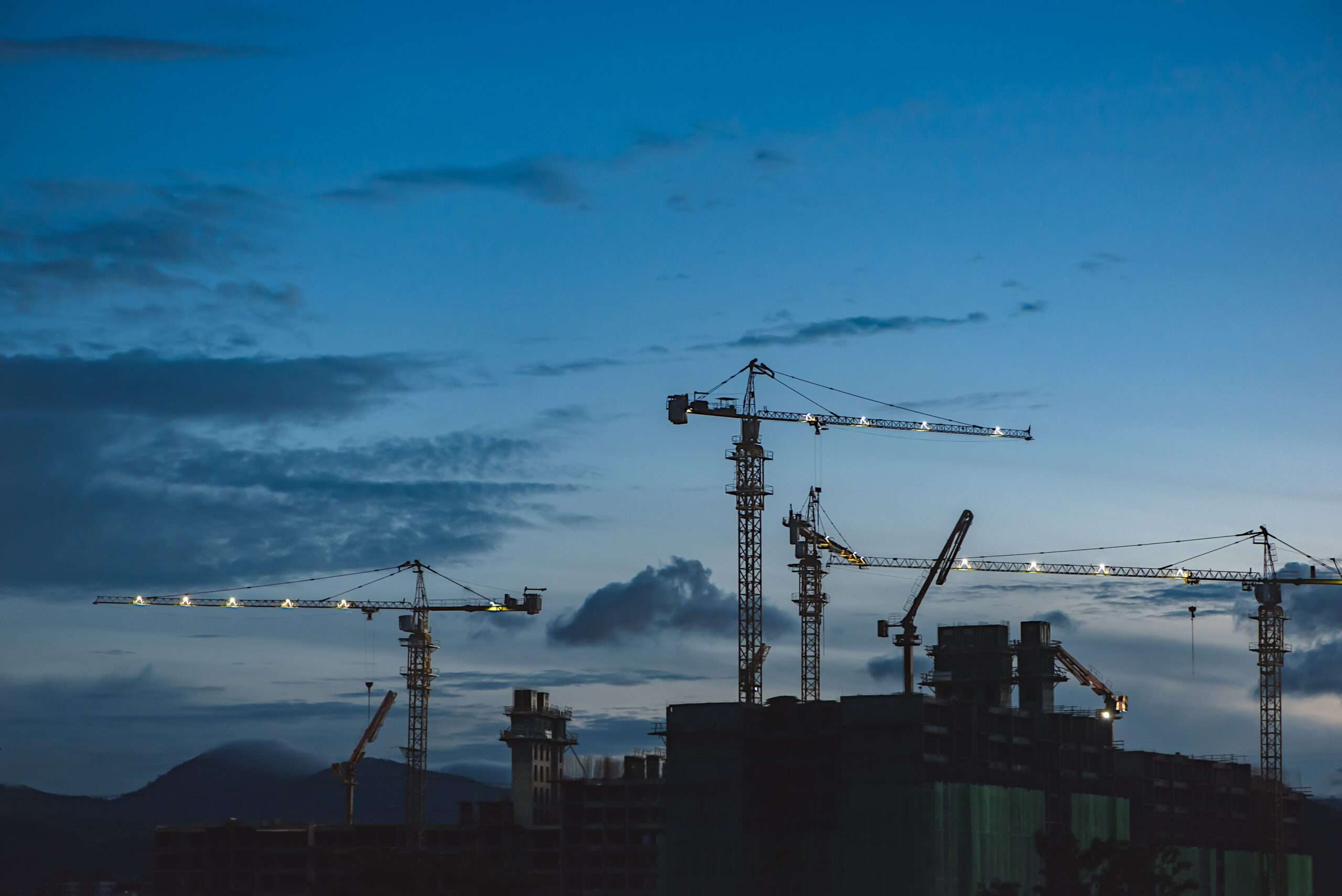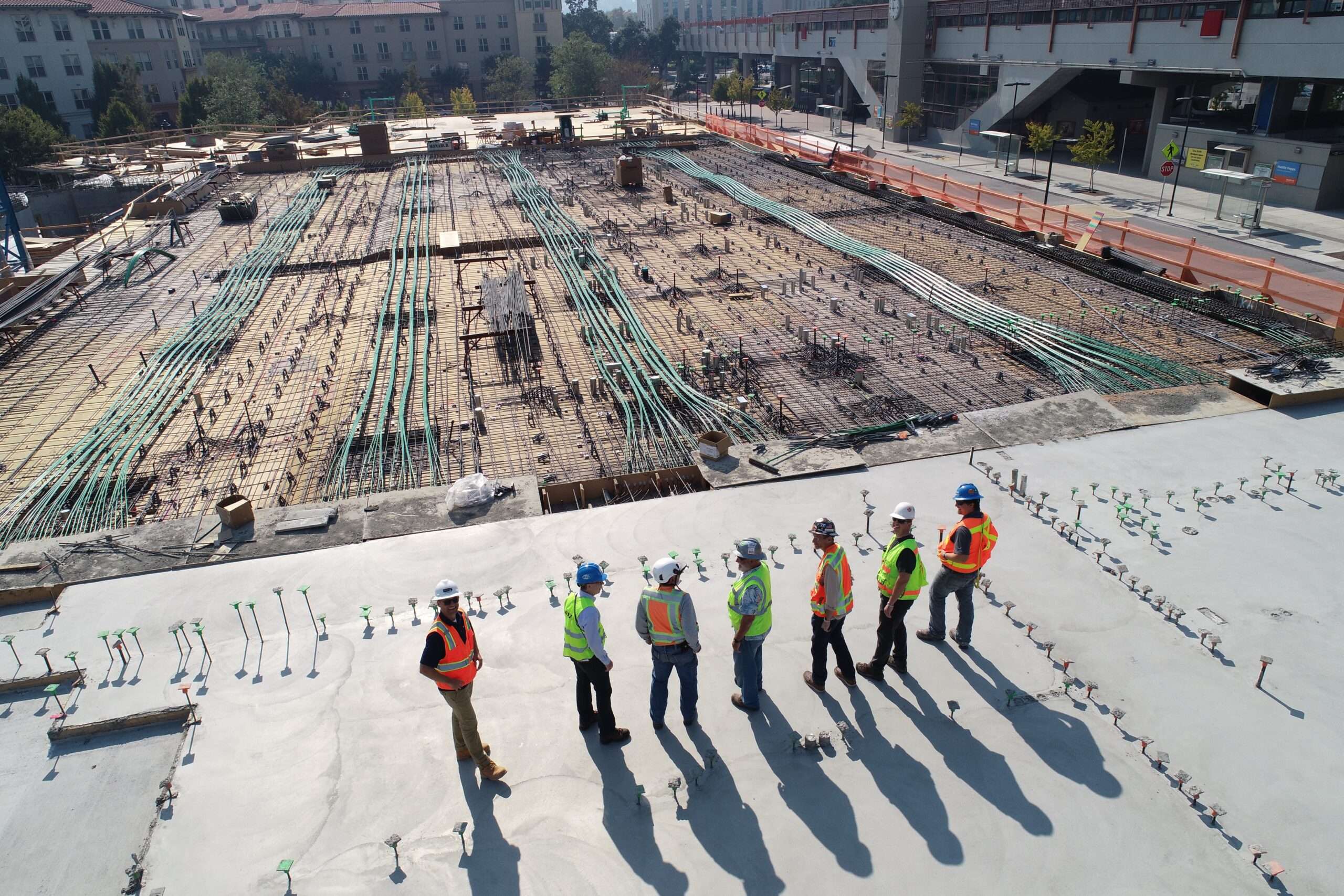In the realm of off-grid living, shipping containers have emerged as an innovative solution for housing and storage. However, one pertinent question remains: do shipping containers have double walls? This inquiry is crucial in determining the insulation properties and structural integrity of these containers. By thoroughly examining the construction of shipping containers, this article aims to shed light on the presence or absence of double walls within these modular structures. Through an academic lens, we will delve into the intricacies of shipping container design, contemplating its implications for off-grid enthusiasts and those seeking sustainable living solutions.
Shipping Containers and Their Construction

Overview of Shipping Containers
Shipping containers are large steel boxes used to transport goods across long distances, both domestically and internationally. They have revolutionized the logistics industry by providing a safe and secure means of transporting a wide range of products. These containers come in various sizes and types to accommodate different cargo requirements. Understanding the materials used and the construction process of these containers is crucial for evaluating their efficiency and durability.
Materials Used for Shipping Containers
Shipping containers are primarily constructed using steel, which is renowned for its strength and durability. The steel sheets used for the walls and roof of the containers are typically made from corten steel, a weathering steel known for its resistance to corrosion. Corten steel contains alloying elements such as copper, phosphorus, nickel, and chromium, which enhance its ability to withstand harsh weather conditions and prevent the formation of rust. The strength and rigidity of steel make it an ideal choice for building containers that can withstand the demands of transportation and handling.
Construction Process of Shipping Containers
The construction process of shipping containers involves several steps to ensure the containers are robust and able to endure the harsh conditions experienced during transportation. Initially, steel sheets are cut to size according to the container’s dimensions and shape. These sheets are then welded together to form the walls, roof, and floor of the container. To maintain structural integrity, reinforcements such as corner posts and cross members are added to distribute the weight of the cargo evenly. Other components, such as doors, hinges, and locks, are installed to provide easy access and secure the container. Finally, a protective coating is applied to the exterior of the container to enhance its resistance to corrosion and weathering.
Single Wall vs. Double Wall Construction
Difference between Single Wall and Double Wall Construction
Single wall construction refers to the use of a single layer of steel sheets for the walls and roof of the container, while double wall construction involves the use of an additional layer of steel for added strength and insulation. The choice between single wall and double wall construction depends on the specific requirements of the cargo being transported and the environmental conditions it will encounter.
Advantages of Double Wall Construction
Double wall construction provides several advantages over single wall construction. Firstly, the additional layer of steel enhances the structural integrity of the container, making it more resistant to deformation and impact damage. This is especially important when transporting fragile or valuable goods that require extra protection. Secondly, the double wall construction improves insulation, helping to regulate the temperature inside the container. This is particularly beneficial for perishable goods, such as food and pharmaceuticals, which require a controlled environment during transportation. Lastly, the added layer of steel provides an extra barrier against potential theft or tampering, ensuring the security of the cargo.
Disadvantages of Double Wall Construction
While double wall construction offers numerous benefits, it also has some drawbacks. The most significant disadvantage is the increased weight of the container, which can limit the amount of cargo that can be transported. The additional layer of steel adds to the overall weight of the container, reducing its payload capacity and potentially increasing transportation costs. Additionally, the double wall construction requires more materials and labor during the manufacturing process, making it more expensive than single wall construction. This cost factor must be taken into consideration when determining the feasibility of using double wall construction for shipping containers.

Types of Shipping Containers
Shipping containers come in various types, each designed to accommodate specific types of cargo. Understanding the different types of containers is essential for selecting the most suitable option for transporting various goods.
Standard Dry Freight Containers
Standard dry freight containers are the most common type of shipping container and are used for transporting general cargo. They have a fully enclosed structure with solid walls, a roof, and doors for easy loading and unloading. These containers are typically available in sizes ranging from 20 feet to 40 feet in length, with the most common size being the 40-foot container. Standard dry freight containers can be easily customized with features such as ventilation, lighting, and interior modifications to meet specific cargo requirements.
Refrigerated Containers
Refrigerated containers, also known as reefer containers, are designed for transporting perishable goods that require temperature control. These containers are equipped with a built-in refrigeration unit that allows for precise temperature regulation, ensuring that the cargo remains fresh throughout the transportation process. Reefer containers are available in various sizes and have insulation and double wall construction to maintain the desired temperature inside the container.
Open-Top Containers
Open-top containers are designed for transporting oversized cargo that cannot fit through the traditional double doors of a standard container. These containers have a removable roof, allowing for easy top-loading of the cargo using cranes or other lifting equipment. Open-top containers are commonly used for transporting goods such as machinery, vehicles, or large construction materials.
Flat Rack Containers
Flat rack containers are used for transporting heavy or oversized cargo that cannot be accommodated in standard containers due to their size or shape. These containers have collapsible sides, providing easy access for loading and unloading the cargo. Flat rack containers are commonly used for transporting goods such as vehicles, machinery, or building materials.
Tank Containers
Tank containers are specialized containers designed for transporting liquid or gaseous cargo. These containers have a cylindrical shape and are equipped with a tank that can be pressurized or non-pressurized, depending on the nature of the cargo. Tank containers are commonly used for transporting hazardous chemicals, food-grade products, or gases.
Double Wall Construction in Standard Dry Freight Containers
Design and Layout of Standard Dry Freight Containers
Standard dry freight containers are designed to maximize cargo space while ensuring the structural integrity of the container. The containers have a rectangular shape with solid walls, a roof, and double doors at one end for easy loading and unloading. The interior of the containers can be customized with various features such as shelves, tie-down points, or hanging brackets to secure the cargo during transportation. The design and layout of the containers allow for efficient stacking and easy handling using cranes or forklifts.
Materials Used for Double Wall Construction
In standard dry freight containers with double wall construction, an additional layer of steel sheets is used for the walls and roof. These steel sheets are typically made from the same corten steel used for single wall construction. The double wall construction enhances the strength and durability of the container, providing additional protection for the cargo.
Insulation and Interior Finishes
The double wall construction of standard dry freight containers allows for improved insulation, which is especially beneficial when transporting goods that require temperature control. The space between the inner and outer walls of the container can be insulated using materials such as foam or fiberglass, which helps regulate the temperature inside the container. Additionally, the interior of the container can be finished with materials such as plywood or gypsum board to provide a more aesthetically pleasing and functional space for the cargo.
Strength and Durability of Double Wall Construction
Double wall construction significantly enhances the strength and durability of standard dry freight containers. The additional layer of steel provides increased rigidity and resistance to deformation, ensuring the container can withstand the stresses of transportation and handling. This is particularly important when stacking multiple containers or when transporting heavy cargo that exerts high pressures on the container walls. The double wall construction also improves the container’s resistance to impact damage, offering better protection for fragile or valuable goods.

Double Wall Construction in Refrigerated Containers
Purpose and Features of Refrigerated Containers
Refrigerated containers are specifically designed for transporting perishable goods that require temperature control. These containers are equipped with a built-in refrigeration unit that allows for precise temperature regulation, ensuring that the cargo remains fresh during transportation. Refrigerated containers have double wall construction and insulation to maintain the desired temperature inside the container, regardless of the external climate conditions. These features make them ideal for transporting goods such as fresh produce, pharmaceuticals, or other temperature-sensitive products.
Insulation and Temperature Control
In refrigerated containers, insulation plays a crucial role in maintaining the desired temperature. The space between the inner and outer walls of the container is filled with insulation material, such as foam or fiberglass, to minimize heat transfer. The double wall construction provides an additional layer of protection against external temperature fluctuations, ensuring that the cargo remains at the required temperature throughout the journey. The refrigeration unit inside the container actively controls the temperature, allowing for precise regulation based on the specific requirements of the cargo.
Materials Used for Double Wall Construction
Similar to standard dry freight containers, refrigerated containers with double wall construction use steel sheets made from corten steel for the walls and roof. The double layer of steel enhances the strength and durability of the container, providing added protection for the temperature-sensitive cargo. The choice of materials and construction techniques ensures that the container can withstand the demands of transportation and maintain the desired temperature control.
Supporting Infrastructure for Refrigerated Containers
Refrigerated containers require additional supporting infrastructure to ensure proper functioning and control of the temperature. This includes external power sources or generators to supply electricity to the refrigeration unit, as well as temperature monitoring systems to ensure the cargo remains within the specified temperature range. Proper ventilation and air circulation systems are also necessary to prevent temperature gradients within the container and maintain uniform cooling throughout.
Other Containers with Double Wall Construction
Double Wall Construction in Open-Top Containers
While open-top containers are typically designed with single wall construction to accommodate oversized cargo, there may be instances where double wall construction is employed. Double wall construction in open-top containers can provide additional strength and rigidity, making them suitable for transporting heavy or fragile goods that require extra protection. This construction design ensures that the container can endure the stress of top loading and secure transportation.
Double Wall Construction in Flat Rack Containers
Similarly to open-top containers, flat rack containers are often constructed with single walls to allow for easy loading and unloading of oversized cargo. However, in cases where the cargo is particularly heavy or valuable, double wall construction can be used to provide increased strength and protection. The double wall construction in flat rack containers ensures that the cargo is adequately supported and protected during transportation, especially when loaded on ships or other modes of transport.
Double Wall Construction in Tank Containers
Tank containers, designed specifically for transporting liquid or gaseous cargo, are typically constructed with double walls for added safety and containment. The double wall construction provides an extra layer of protection against leaks or spills, reducing the risk of environmental contamination or accidents. The inner tank, constructed from materials suitable for the specific cargo, is enclosed within an outer shell made of steel. This double wall construction ensures the safe transportation of hazardous or sensitive materials.
Advantages of Double Wall Construction in Shipping Containers
Enhanced Strength and Structural Integrity
One of the primary advantages of double wall construction in shipping containers is the enhanced strength and structural integrity it provides. The additional layer of steel significantly strengthens the container, making it more resistant to deformation and impact damage. This is particularly important when transporting fragile or valuable goods that require extra protection. The improved strength and rigidity of the container ensure that it can withstand the stresses of transportation and handling, reducing the risk of damage to the cargo.
Improved Insulation and Temperature Control
Double wall construction in shipping containers contributes to improved insulation and temperature control, especially in refrigerated containers. The additional layer of steel combined with proper insulation materials minimizes heat transfer and helps maintain the desired temperature inside the container. This is crucial for transporting perishable goods such as food, pharmaceuticals, or other temperature-sensitive products. The double wall construction, along with the insulation, ensures that the cargo remains fresh and intact throughout the journey, regardless of the external climate conditions.
Added Security and Protection
Another significant advantage of double wall construction in shipping containers is the added security and protection it offers. The extra layer of steel acts as a barrier against theft or tampering, providing an additional level of security for valuable cargo. This is especially important when transporting high-value goods or sensitive materials. The double wall construction enhances the container’s resistance to unauthorized access and protects the cargo against potential damage or pilferage, ensuring its safe arrival at the destination.
Reduced Noise and Vibration
Double wall construction in shipping containers also contributes to reduced noise and vibration levels during transportation. The additional layer of steel helps dampen external noise and vibrations, providing a smoother and quieter journey for the cargo. This is particularly beneficial for goods that are sensitive to vibrations or for minimizing disturbances in urban areas during transport. The reduced noise levels also have potential benefits for nearby communities and workers involved in the handling and transportation of the containers.
Considerations for Double Wall Construction
Cost and Budgeting
One of the main considerations when opting for double wall construction in shipping containers is the associated cost. Double wall construction requires additional materials and labor during the manufacturing process, leading to increased production costs compared to single wall construction. Therefore, careful evaluation of the budget and cost-effectiveness is necessary to determine if the benefits of double wall construction outweigh the additional expenses. Depending on the specific cargo requirements and the desired level of protection, the financial feasibility of double wall construction needs to be assessed.
Weight and Space Constraints
Double wall construction adds to the overall weight of the container, potentially affecting the payload capacity and transportation costs. The additional weight limits the amount of cargo that can be transported within the container, reducing its efficiency and increasing the number of containers needed. This becomes particularly relevant when considering weight restrictions imposed by transportation regulations or the capacity of transport vehicles. Additionally, the added thickness of the walls may reduce the internal space available within the container, which can impact the cargo capacity and loading arrangements.
Specialized Features and Customization
Double wall construction in shipping containers may require specialized features and customization to meet specific cargo requirements. This can involve the addition of insulation, ventilation systems, or temperature control mechanisms, depending on the nature of the cargo being transported. Specialized features and customization can increase the complexity and cost of the container, requiring thorough planning and evaluation of the specific needs before implementing double wall construction. Collaboration between container manufacturers, cargo owners, and logistics companies can ensure that the container design and customization align with the intended use of the container.
Maintenance and Repairs
Double wall construction may involve more intricate maintenance and repair processes compared to single wall construction. Any damage or corrosion to the inner or outer walls of the container may require more extensive repair work, potentially impacting the container’s usability and lifespan. Adequate monitoring and regular maintenance are essential to identify and address any issues promptly. Additionally, repair costs and availability of skilled professionals should be considered when evaluating the feasibility of double wall construction in shipping containers. Proper maintenance and repair regimes can help ensure the longevity and efficiency of containers with double wall construction.
Innovations and Future Trends in Shipping Container Design
Double Wall Construction and Sustainable Living
In recent years, there has been a growing focus on sustainable living and environmentally friendly practices. Double wall construction in shipping containers can contribute to sustainable living in multiple ways. Firstly, the additional layer of insulation helps reduce energy consumption by minimizing temperature fluctuations inside the container. This can lead to reduced reliance on heating or cooling systems and lower energy costs. Secondly, the enhanced structural integrity of containers with double wall construction can extend their lifespan, reducing the need for frequent replacements and minimizing waste. With proper insulation and environmental control, shipping containers can also be repurposed as off-grid homes, contributing to sustainable housing solutions.
Integration of Smart Technologies
The integration of smart technologies is another emerging trend in shipping container design. Double wall construction can facilitate the installation of sensors and monitoring systems to track the environmental conditions inside the container, such as temperature, humidity, or air quality. These sensors can provide real-time data and alerts, enabling timely adjustments to maintain optimal conditions for the cargo. Smart technologies can also enhance the security features of shipping containers, with advanced locking systems and remote monitoring capabilities. The integration of smart technologies with double wall construction can improve the efficiency, safety, and security of shipping containers and the goods they transport.
Modularity and Expandability
Modularity and expandability are key considerations in shipping container design for various applications, from residential to commercial uses. Double wall construction in shipping containers allows for more flexibility in modifying and adapting the container to meet specific needs. The additional layer of steel provides a robust foundation for structural modifications or expansions. Shipping containers can be easily combined or stacked to create larger structures, or they can be transformed into functional spaces such as offices, classrooms, or medical facilities. The modularity and expandability offered by double wall construction enable innovative and cost-effective solutions for different industries and activities.
Alternative Construction Materials
In addition to steel, alternative construction materials are being explored to further enhance the efficiency and sustainability of shipping container design. These materials include composite panels, such as fiberglass-reinforced plastic (FRP) or aluminum honeycomb, which offer comparable strength and durability to steel while reducing the overall weight of the container. The use of alternative materials in combination with double wall construction can result in lighter, more energy-efficient containers without compromising structural integrity or cargo protection. However, the feasibility and cost-effectiveness of alternative materials need to be carefully evaluated to ensure they meet the specific requirements of shipping containers.
Conclusion
Shipping containers have revolutionized the logistics industry, providing a safe and efficient means of transporting goods across long distances. The construction of shipping containers, especially with double wall construction, plays a crucial role in ensuring the strength, durability, and security of the cargo during transportation. Double wall construction enhances the structural integrity of shipping containers, providing added protection against impact damage and deformation. It also improves insulation and temperature control, making it suitable for transporting delicate goods or products that require controlled environments. Despite the advantages offered by double wall construction, considerations such as cost, weight, space constraints, and maintenance need to be carefully evaluated. The integration of smart technologies, modularity, and alternative construction materials are key trends in shipping container design, driving innovation and sustainability in the industry. With ongoing advancements, shipping containers with double wall construction continue to meet the evolving needs of various industries and contribute to the efficient and secure transportation of goods.




